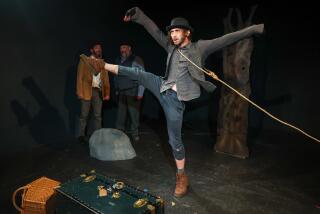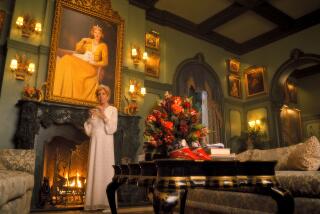‘Empire’s’ multi-level set a featured player in musical at La Mirada Theatre
The set for La Mirada Theatre’s new musical “Empire” is so different that director and choreographer Marcia Milgrom Dodge has given it a name: Helga.
The old-fashioned musical is all about what it took to build the Empire State Building during the Depression, when dreamers beat the odds — and safety guidelines weren’t yet up to snuff. As a result, a good deal of the action takes place on scaffolding high in the air.
This presented Dodge and scenic designer David Gallo with an unusual challenge. How to sweep the audience into the sky without creating a risky high-rise environment for the cast? Their solution was to build a computer-controlled set that works in tandem with computer-controlled video projections.
“I always say, ‘I don’t want to see a movie onstage, I want to see people onstage,’” Dodge says the morning after opening night while sitting in the theater with Gallo and lead actors Kevin Earley and Stephanie Gibson. “But this story is too epic, and there are too many locations and too much history to ignore.”
Traditional scenery, Dodge decided, was not going to do the trick, so she sent Gallo a music video by a singer named Irma from Cameroon that featured the kind of projection mapping she hoped to employ for the show. To oversimplify an incredibly complicated process: Gallo built a set that has two levels, each capable of moving along vertical and horizontal lines. This set was painted a metallic silver. Five projectors beam meticulous artwork of the building in various stages of construction as well as New York City streetscapes and interiors.
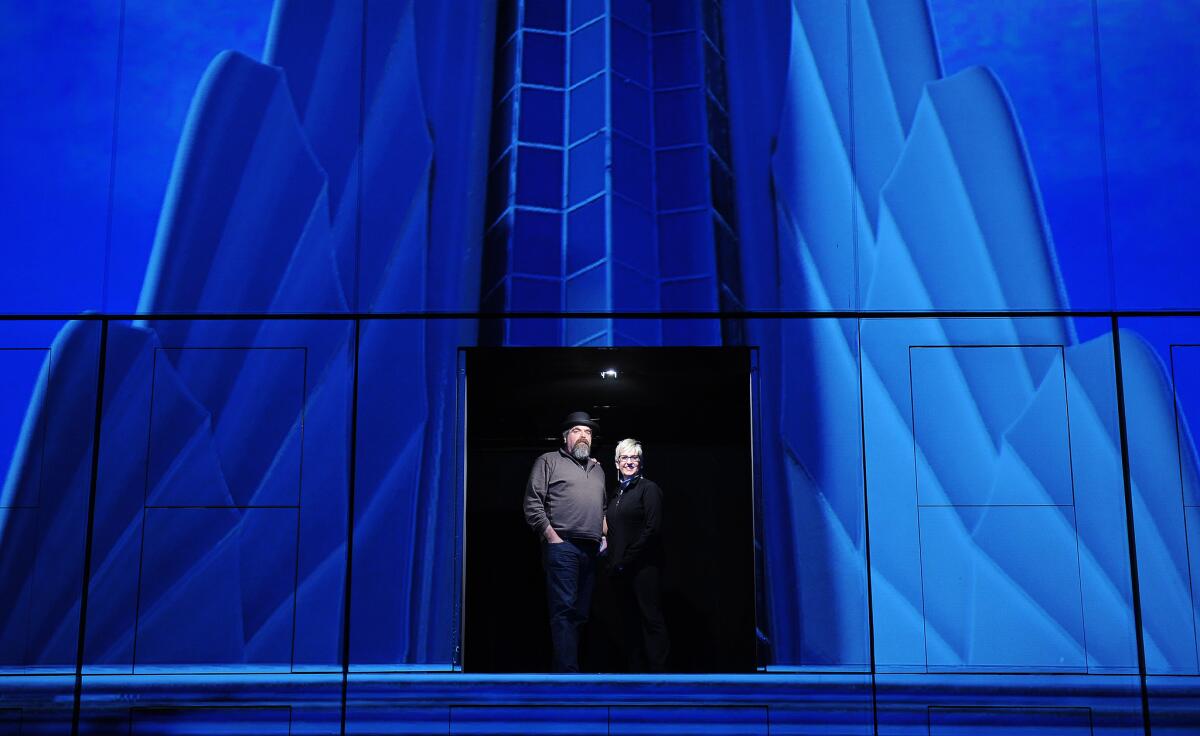
Set designer David Gallo and director and choreographer Marcia Milgrom Dodge check out the stage design for “Empire: The Musical” La Mirada Theatre.
When these projectors produce their imagery in tandem from different angles, they minimize any shadows that might be cast on the set, and the actors can easily mime interacting with various pieces like revolving doors, scaffolding and construction materials. Soldering irons give off digital sparks.
“It was a very particular choice,” says Gallo, who has designed more than 30 Broadway shows including “The Drowsy Chaperone,” for which he won a Tony Award. He said he’s never worked with video on this kind of scale.
“We knew we didn’t want it to be a show where we’re constantly winching scenery on and off,” he said.
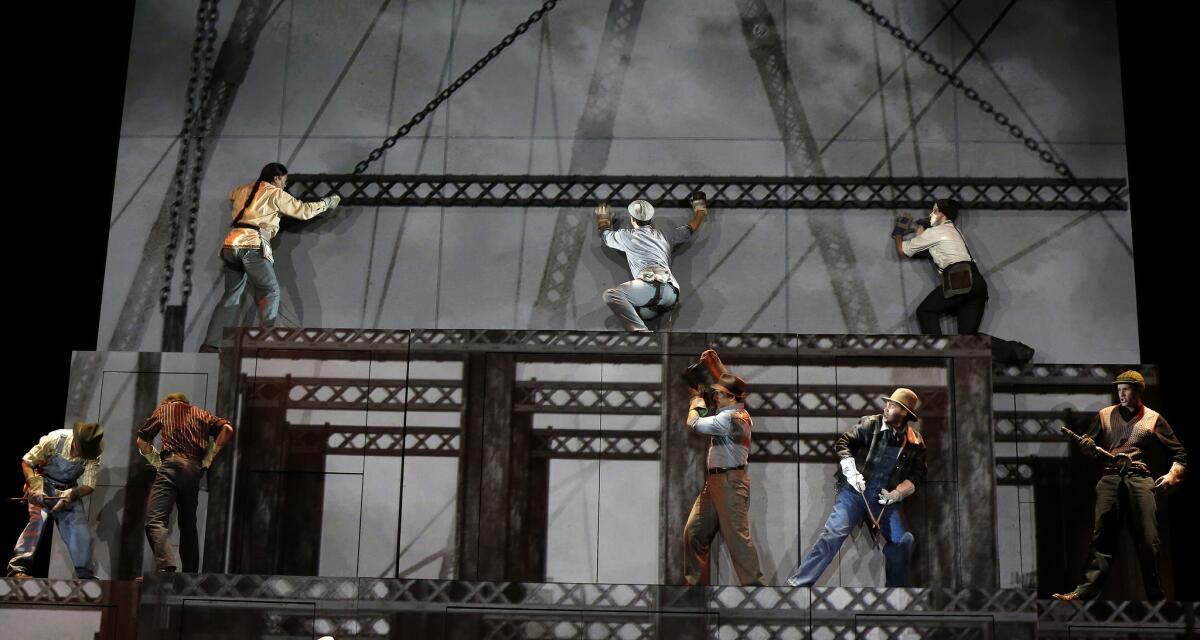
The production of “Empire” at the La Mirada Theatre features projected scaffolding.
The process of designing the set took months, but the actors didn’t set foot on it until 10 days before the first curtain. During that time, Dodge became a tape-line monster. Tape on the stage floor helps the actors to hit their marks and to make their interactions with the projections appear seamless. Tape lines also were used in the rehearsal studio before the production moved into La Mirada Theatre.
“The show was completely figured out on paper, and we had very little time,” Dodge says. “‘You just got knocked in the head by Helga!’ I’d yell at them. ‘You just walked in the wrong door!’ You have to know Helga. If you don’t know where you are in the theater, you’re going to get slammed.”
Helga is almost more intense backstage than she is onstage, says Gibson, who plays the role of sassy Frankie Peterson, the female “right-hand man” of Al Smith, the former New York governor who headed up the corporation that built the Empire State Building.
“And it’s all set to music too,” she says. “So our backstage choreography is unbelievable. There’s a whole different choreographed story back there.”
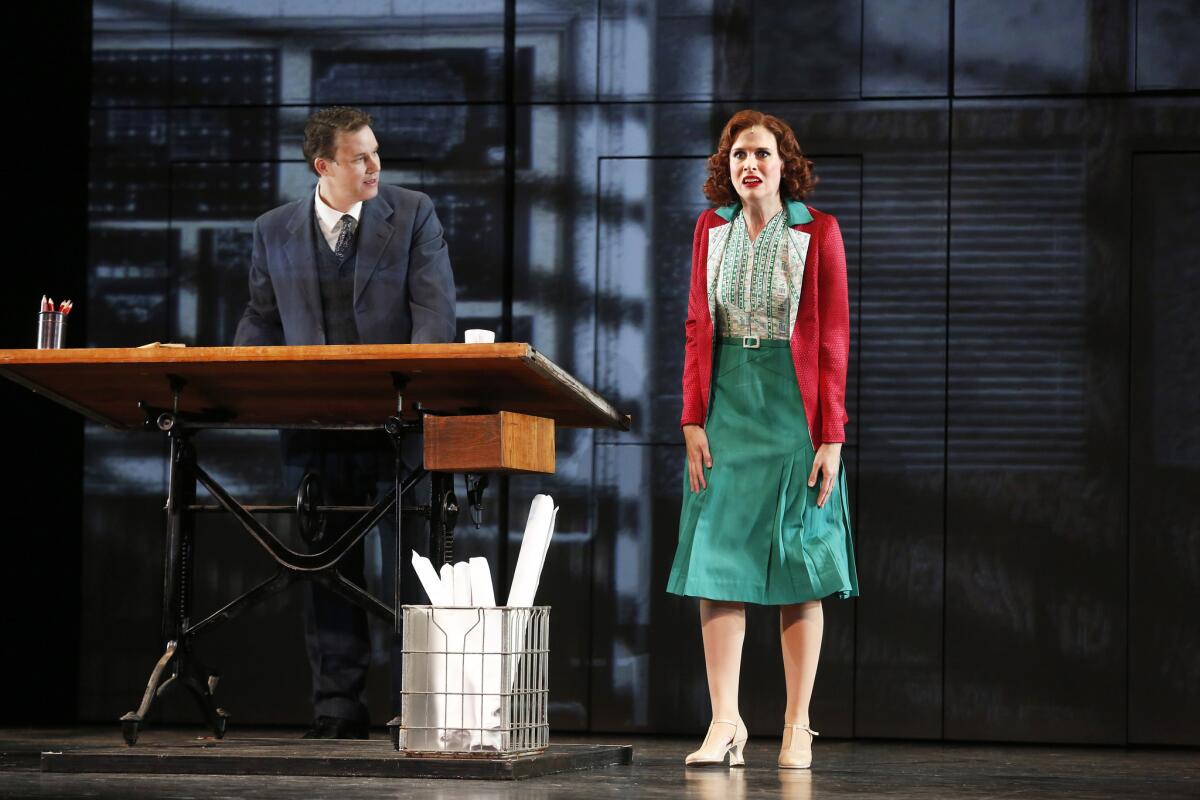
Kevin Earley plays Michael Shaw to Stephanie Gibson’s Frankie Peterson in “Empire.”
More than 50 crew members make sure all that backstage maneuvering doesn’t go awry. Gallo says he considered the behind-the-scenes just as much as he did the onstage logistics when designing the set.
“It took about three days before we really got comfortable,” says Earley, who plays Empire State Building architect Michael Shaw, a dreamer who sets Frankie’s teeth on edge before she falls madly in love with him. “It’s about figuring out your pattern, and you have to repeat your pattern, and you can’t vary from that pattern.”
The goal of the team behind “Empire,” which began development more than 15 years ago, is to take the show to Broadway. Whether it will get there is, as Dodge says, “in the hands of the theater gods.” But the excitement about the possibilities of the set moving into the future is very real.
“We came here to find out what its potential is,” Dodge says. “But we feel we’re just beginning, and we have so much more to investigate with our beautiful Helga.”
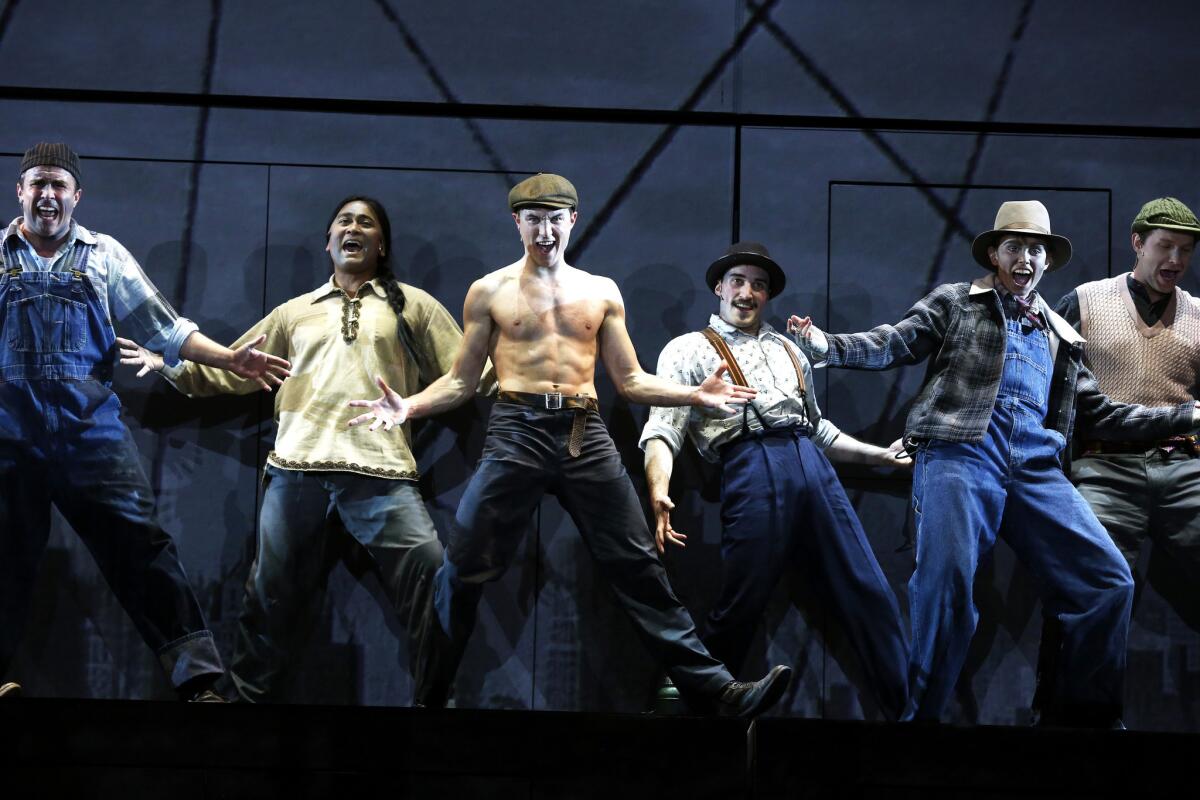
Riveting turns to singing and dancing in “Empire,” a new musical opening at the La Mirada Theatre that explores the creation of the Empire State Building.
The first thing they might do is add another level to the set. That was in the original plan, but it had to be cut to save money. Helga also features a variety of doorways through which actors walk in and out. Gallo points out that with the aid of additional projections, entire scenes could be played inside those doorways. The creative team would also like to projection map the stage floor and the side walls to further flesh out the universe.
Does all this digitization make Gallo’s set-building colleagues nervous?
“There’s not really any backlash,” he says, although he admits that the guy he regularly uses to paint his sets seemed “mildly disappointed” when he found out that his palette would consist entirely of silver. “A lot of the artists that traditionally went into painting are going into digital art.”
Plus, this show requires so much automation and technology that the fabricators and software developers are excited about the direction “Empire” is going.
“My job is to do whatever is appropriate for the piece,” Gallo says. “This seemed like an excellent solution for the complexities of the musical itself.”
More to Read
The biggest entertainment stories
Get our big stories about Hollywood, film, television, music, arts, culture and more right in your inbox as soon as they publish.
You may occasionally receive promotional content from the Los Angeles Times.
